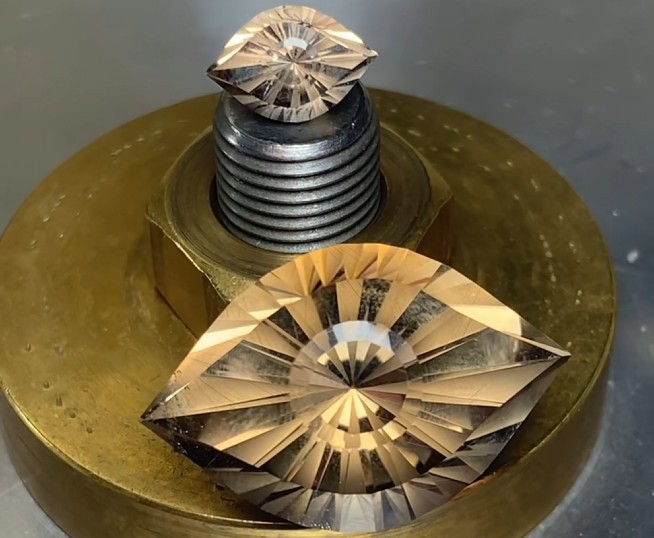
The Eye Cut: Where Symbolism Meets Nature
Dennis has a deep fascination with the “Eye” gemstone cut—a design originally created by the late Bob Kellor, who named it “Cleopatra’s Eye.” Dennis’s version is a refined adaptation of Kellor’s original, which has been tailored and changed for hand-faceting methods that rely more on visual intuition and tactile feedback than on machine-calibrated angles and gauges.
The Eye cut has long been regarded as a challenging design, reserved for master gemstone cutters. Many who attempt it consider it the pinnacle of their gem-cutting journey—so complex and profound that they never cut another afterward.
But the Eye holds significance beyond the technical mastery it demands.
Across cultures and centuries, the Eye has been a powerful symbol. In some traditions, it protects against the “evil eye”—malicious thoughts borne from envy or jealousy. Elsewhere, it represents the “Eye of Providence,” like the one seen on the U.S. dollar bill. In spiritual beliefs, it is the “all-seeing eye” of the divine.
In Norse mythology, Odin sacrificed his right eye to gain wisdom from Mimir, the god of knowledge. In ancient Egypt, the Eye of Horus was a sacred amulet believed to offer protection, health, and restoration.
The phrase “apple of my eye,” now a term of endearment, originally described God's tender love for humanity, referencing the “little man in the eye”—our own reflection seen in our creator’s gaze.
The Bible often uses the eye as a metaphor: a lamp revealing one’s inner being. Shakespeare, too, saw the eye as a symbol of insight, truth, understanding—and at times, blindness. As he famously wrote, “The eyes are the windows to the soul.”
With these meanings in mind, my first jewellery theme, based on the Eye cut, is inspired by nature and our deep, often overlooked connection to the world around us. Everything on Earth—plants, animals, wind, fire, water, even sound—has a spirit. These elements aren’t just our surroundings; they are part of us.
This first design is a tribute to the spirit of nature as a unified, living orchestra—our collective creator gazing through the leaves of a rowan tree. As we look into the gemstone, we see our reflection: we become the “little person in the stone.” A union is formed—between ourselves and the spirit of the natural world.